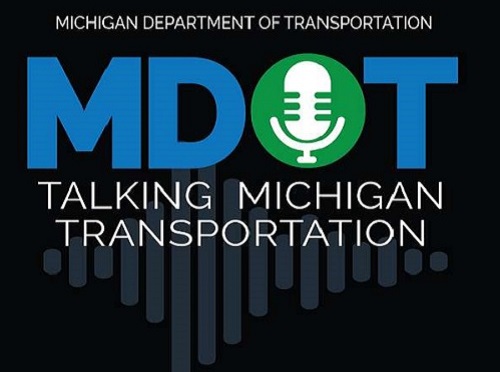The latest “Talking Michigan Transportation” podcast – produced by the Michigan Department of Transportation – interviewed Julie Clark, chief executive officer for the Traverse Area Recreation and Transportation or TART Trails advocacy group to discuss how trail networks can enhance quality of life for residents while also providing an economic boost.
[Above image via Michigan DOT]
The economic value of trail networks comes from the key role they play in outdoor recreation, Clark said. For example, in 2021, the U.S. Bureau of Economic Analysis released statistics estimating that outdoor recreation accounted for $862 billion in economic output or consumer spending), 1.9 percent or $454 billion of gross domestic product, and supported 4.5 million jobs.
In Michigan, outdoor recreation in 2021 contributed $10.8 billion to the state economy, according to that agency’s numbers, as well as support for 109,000 jobs and $5 billion in wages.
“Our vision is ‘every house a trailhead,’ meaning we want people to be able to leave their home and access a trail,” Clark noted. “Getting out on the trails doesn’t mean there’s a trail up to your door, but the facilities – whether you’re rural or in a town – should be nearby and you should feel very comfortable and safe using them. That is where we come in, working with [local] road commissions and state DOTs.”
She also emphasized that trails help increase property values and help reinvigorate neighborhoods –key economic development benefits for communities.
“They also provide, as COVID [the COVID-19 pandemic] pointed out, some really important opportunities for physical and mental health, and that I think has become so important to folks all around our region and, I think, around the state,” Clark noted.
To listen to the entire podcast, click here.
There has been an ongoing push over the last several years to increase trail networks across the country.
For example, in January 2023, the Rails-to-Trails Conservancy or RTC recently launched a national effort aimed at creating a “new community” where public leaders, advocates, and transportation professionals can come together to advance the development of trails and other active-transportation networks across the country.
Dubbed the TrailNation Collaborative, this new “community effort” seeks to fill what RTC describes as an “unmet need” for peer learning and collective action in order to leverage funding from the Infrastructure Investment and Jobs Act or IIJA to create a connected systems of trails, sidewalks, and protected bike lanes in every community in America.
State departments of transportation around the country are also spearheading their own trail expansion efforts.
For example, the Vermont Agency of Transportation’s Lamoille Valley Rail Trail project – the winner of the 2023 America’s Transportations Awards People’s Choice Award – is a 93-mile multi-modal recreational path in northern Vermont, connecting 18 town centers and linking to other trails in Vermont and Canada.
This project is open year-round for various activities, including walking, biking, horseback riding, snowmobiling, and cross-country skiing, preserving Vermont’s natural landscape.
In November 2023, the Texas Transportation Commission approved over $345 million for new sidewalks, bikeways, and other types of active transportation infrastructure projects statewide.
The funding will go towards 83 projects designed to improve bicycle and pedestrian access while providing safety enhancements and mobility options to schools, jobs, public transit systems, and local destinations, the commission said.
The Texas Department of Transportation noted that some the projects approved by the commission include sidewalks connecting to schools and transit options, shared-use paths benefiting both pedestrians and cyclists, new pedestrian bridges, and 15 planning studies.
In July 2022, a team of Utah State University researchers recently explored how to use the state’s network of historic canal trails as an active transportation solution. That study is poised to help the Utah Department of Transportation and community leaders make decisions about building canal paths and trails.
The Utah DOT funded the university’s research project – entitled “Active Transportation Facilities in Canal Corridors” – that the American Society of Civil Engineers subsequently published in June 2022.

